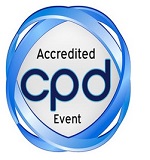
Gayane Gevorgyan
Center of Haematology, Armenia
Title: Hepatitis B/C Occurrence In Blood Donors Of Yerevan City
Biography
Biography: Gayane Gevorgyan
Abstract
Purpose: Blood transfusion safety is one of the main problems of hematology. The detection of hepatitis B and C in blood donors of Yerevan city was the purpose of current study. Materials and Methods: Samples of blood were studied by ELISA method using AXSYM automated analyzer (Abbott-system). Blood samples were collected by “d-VAC Gel and Clot aÑtivator†tubes. Blood serum was separated by centrifugation (6000 ï‚´ g; 10 min). Samples were assayed in the day of blood collection. Results: Results of investigations for period of 2013 – 2014 years are presented here. In 2013 the number of donations was 7555. Hepatitis B surface antigen (HBsAg) was detected in 1(0.01%) cases; antibodies to hepatitis B core antigen (Anti-HBc) were revealed in 296 (3.9%); hepatitis C antibodies (HCV) were shown in 29(0.38%) cases. Above it, we detected 26(0.34%) HBsAg+Anti-HBc and 13(0.17%) HCV+Anti-HBc double positive samples. In 2014 the quantity of studies was 8341.3(0.035%) samples were positive to HBsAg; 329(3.94%) tests were positive to Anti-HBc; HCV was shown in 48(0.57%) cases. HBsAg+Anti-HBc were detected in 43(0.52%) and HCV+Anti-HBc double positive results were described in 10(0.12%) cases. Conclusion: Increasing dynamics of blood donations was characterized for the studded period. In the same time the revealing of donors data and Anti-HBc and HBsAg+Anti-HBc mixed detections were increased. On the other hand, in 2014 was shown the enhancement of HCV-positive cases. Results of HBsAg and HCV+Anti-HBc studies were stable

